According to the revised Health Insurance Law project being developed by the Ministry of Health , the rights of health insurance patients are greatly expanded.
Additional benefits for health insurance patients
The 2024 Law on Health Insurance allows the transfer of patients between health insurance medical examination and treatment facilities if it exceeds the technical expertise capacity, or a medical examination and treatment facility with a higher technical expertise level transfers a patient who has been treated stably to a lower technical expertise level, or at the same level, or in cases requiring long-term treatment, the patient is transferred to the initial health insurance medical examination and treatment facility for management and monitoring.
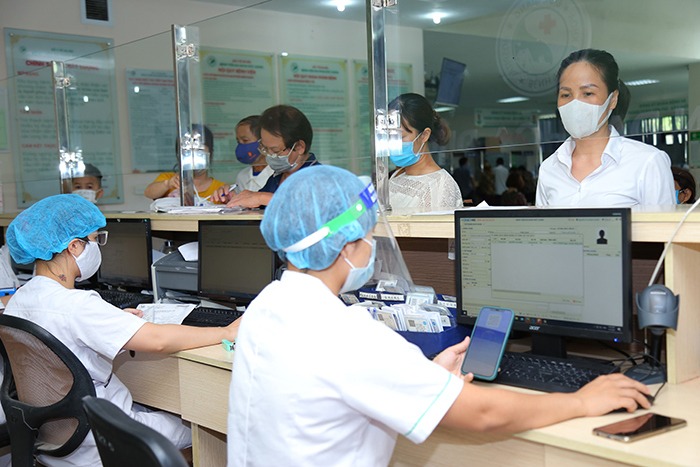 |
| According to the revised Health Insurance Law project being developed by the Ministry of Health, the rights of health insurance patients are greatly expanded. |
That means patients who have been diagnosed with certain chronic diseases and prescribed at higher levels can go to lower levels for treatment and receive the same medicine and medical supplies as at higher levels, so that people can receive the best medicine wherever they are treated.
Currently, health insurance only pays for ambulances transporting patients from districts to provinces, but this draft Law on Health Insurance proposes to pay for health insurance to also transport patients between medical facilities, in case of emergency or inpatient treatment, they must be transferred to a medical facility according to professional requirements and need to be transported by a specialized patient transport vehicle.
The draft Law on Health Insurance also allows the transfer of drugs and medical equipment between health insurance facilities if they are not available and the patient cannot be transferred to another medical facility - something that the current Law does not cover.
An important content of the Law project under construction is to pay health insurance for early diagnosis and treatment of a number of diseases with high incidence rates, large disease burden and effective early intervention treatment such as breast cancer, cervical cancer; treatment of a number of serious and dangerous diseases that require the use of specific therapeutic nutrition.
This helps reduce long-term expenditure for the Health Insurance Fund, reducing the incidence, severity, and mortality. However, there are opinions suggesting that it should be considered and piloted before official implementation.
In addition, the 2024 Health Insurance Law Project proposes direct payment to patients when hospitals do not have enough medicine and medical supplies. This is a solution to overcome difficulties in bidding, which is a hot issue in society.
In particular, according to the new proposal, patients can register for initial medical examination and treatment at general clinics and district health centers and still enjoy 100% health insurance, in order to attract patients to lower levels to reduce the load on upper levels.
Balance fund, still worried about negative?
Ms. Tran Thi Trang, Director of the Department of Health Insurance, Ministry of Health, informed more about the new point of the revised Law on Health Insurance, which is the effective allocation and use of health insurance funds with the proposal to adjust the current maximum health insurance fund management cost of 5% down to a maximum of 4%, the remaining 1% added to the health insurance medical examination and treatment fund.
Thus, the total budget added to the health insurance medical examination and treatment fund each year, about 1,100 billion VND, will be allocated and regulated from the beginning of the year for medical examination and treatment facilities.
According to Ms. Trang, along with the principle of fund preservation, it is still necessary to include social security policies and many groups participating in health insurance are covered by the state budget to buy health insurance cards.
In fact, more than 40% of health insurance fund revenue comes from the state budget, purchasing and issuing health insurance cards for the poor, children under 6 years old, near-poor people, policy families, etc.
Ms. Trang said that the health insurance fund's revenue reached 126,000 billion VND/year (in 2023) and this revenue source increased from July this year, due to the increase in basic salary.
Commenting on expanding the scope of benefits when examining and treating health insurance, Mr. Nguyen Tat Thao, Deputy Head of Health Insurance Policy Department, Vietnam Social Insurance, said that Social Insurance supports expanding benefits for patients, but the Ministry of Health needs to have a comprehensive assessment, each expansion policy, how much more the health insurance fund will pay, and whether the balance of revenue and expenditure of the health insurance fund is ensured.
Regarding revenue and expenditure from the health insurance fund over the years, Mr. Thao said that from 2005 to 2009, health insurance payment for medical examination and treatment was based on service fees, without payment ceiling, and without co-payment, the health insurance fund had a deficit of over 2,000 billion VND.
2009 - 2015: Adjusted the contribution rate from 3% to 4.5% of the basic salary; had regulations on payment ceiling and co-payment, the health insurance fund balanced revenue and expenditure.
2016 - 2023: Medical service prices were adjusted, there was an additional structure for medical staff salaries, the drug list was expanded, and the number of medical examinations and treatments increased after the Covid-19 pandemic. The fund had an imbalance in revenue and expenditure. Only in the 3 years 2020 - 2022 was there a large surplus due to the Covid-19 pandemic.
During the 3 years of the Covid-19 pandemic alone, the health insurance fund had a surplus of over 33,000 billion VND due to a sharp decrease in the number of medical examinations and a lack of medicine and medical supplies, resulting in reduced payments.
By the end of 2023, the total health insurance fund surplus to date is 40,000 billion VND, of which 33,000 billion VND surplus during the Covid-19 pandemic. Thus, the health insurance fund surplus is mainly due to reduced spending in the 3 years of the Covid-19 pandemic, the remaining years are almost all negative.
A representative of Vietnam Social Security said that if management costs are included in medical service prices, spending will increase by about 2,500 billion VND/year.
If the depreciation costs of medical equipment and fixed assets are included in the price of medical services, the health insurance fund will increase its expenditure by about VND 67,000 billion. Therefore, the Ministry of Health should consider the balance of revenue and expenditure when expanding the benefits of health insurance patients.
Source: https://baodautu.vn/mo-rong-quyen-loi-cho-nguoi-benh-bao-hiem-y-te-d223797.html


![[Photo] General Secretary To Lam attends the 8th Congress of the Central Public Security Party Committee](https://vphoto.vietnam.vn/thumb/1200x675/vietnam/resource/IMAGE/2025/10/4/79fadf490f674dc483794f2d955f6045)

![[Photo] Solemn opening of the 8th Congress of the Central Public Security Party Committee, term 2025-2030](https://vphoto.vietnam.vn/thumb/1200x675/vietnam/resource/IMAGE/2025/10/4/f3b00fb779f44979809441a4dac5c7df)


![[Photo] Bustling Mid-Autumn Festival at the Museum of Ethnology](https://vphoto.vietnam.vn/thumb/1200x675/vietnam/resource/IMAGE/2025/10/4/da8d5927734d4ca58e3eced14bc435a3)
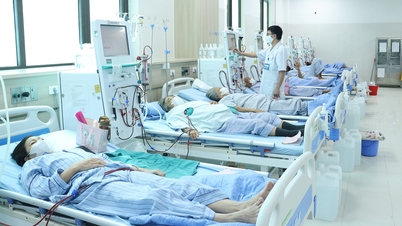







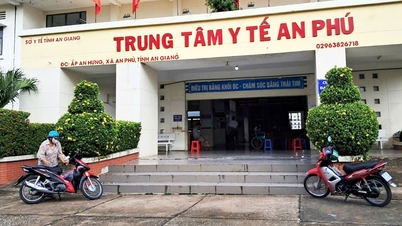
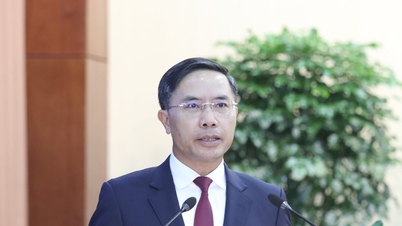





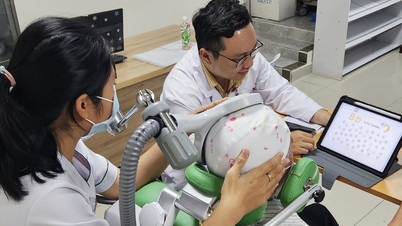

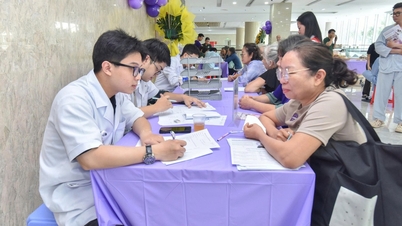







































![[VIDEO] Summary of Petrovietnam's 50th Anniversary Ceremony](https://vphoto.vietnam.vn/thumb/402x226/vietnam/resource/IMAGE/2025/10/4/abe133bdb8114793a16d4fe3e5bd0f12)
![[VIDEO] GENERAL SECRETARY TO LAM AWARDS PETROVIETNAM 8 GOLDEN WORDS: "PIONEER - EXCELLENT - SUSTAINABLE - GLOBAL"](https://vphoto.vietnam.vn/thumb/402x226/vietnam/resource/IMAGE/2025/7/23/c2fdb48863e846cfa9fb8e6ea9cf44e7)



















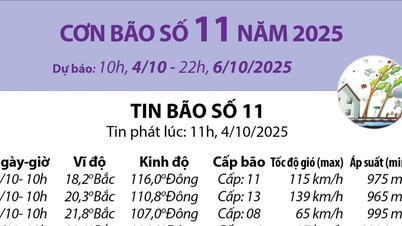



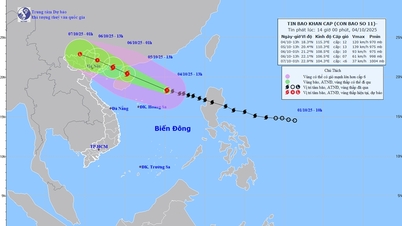









Comment (0)